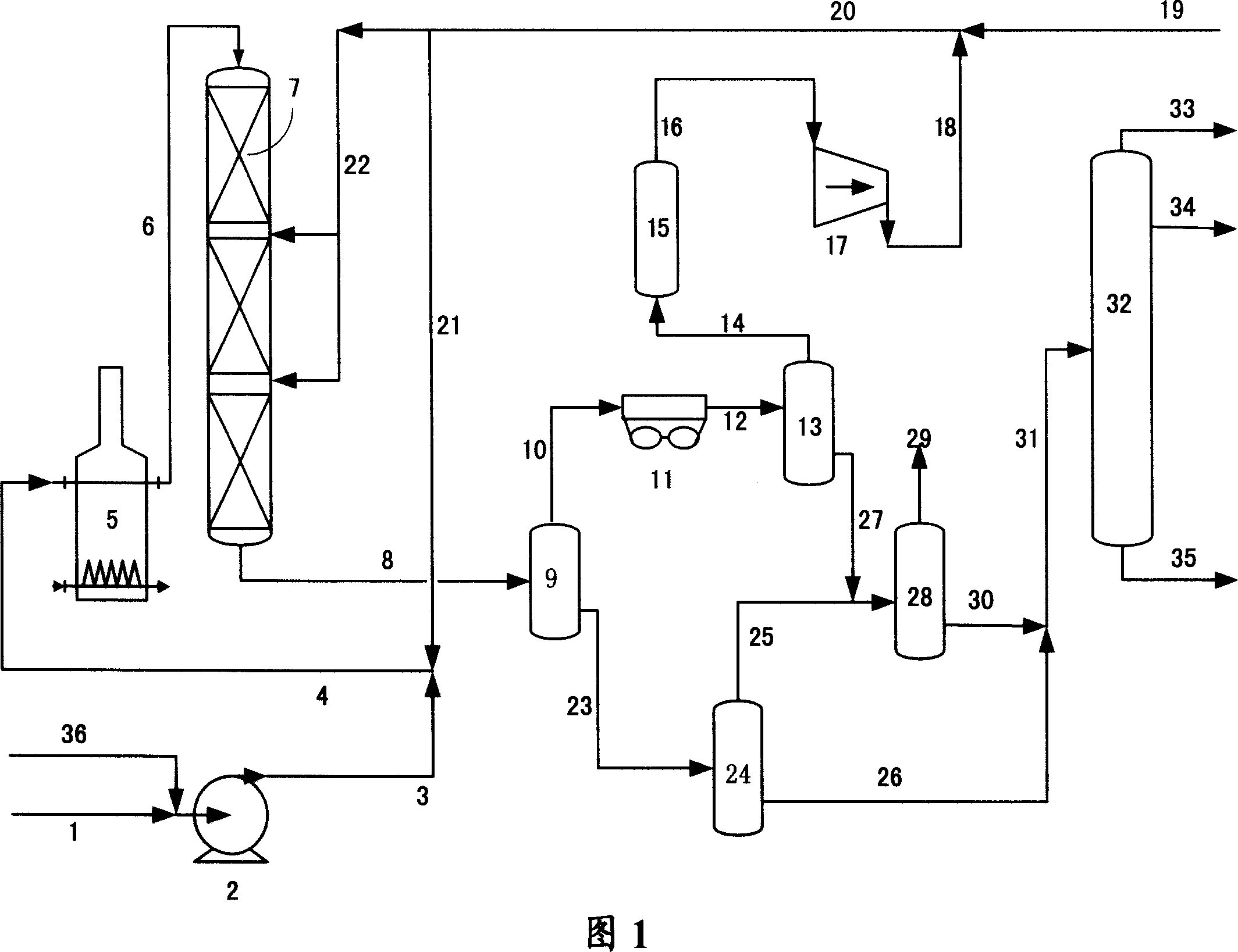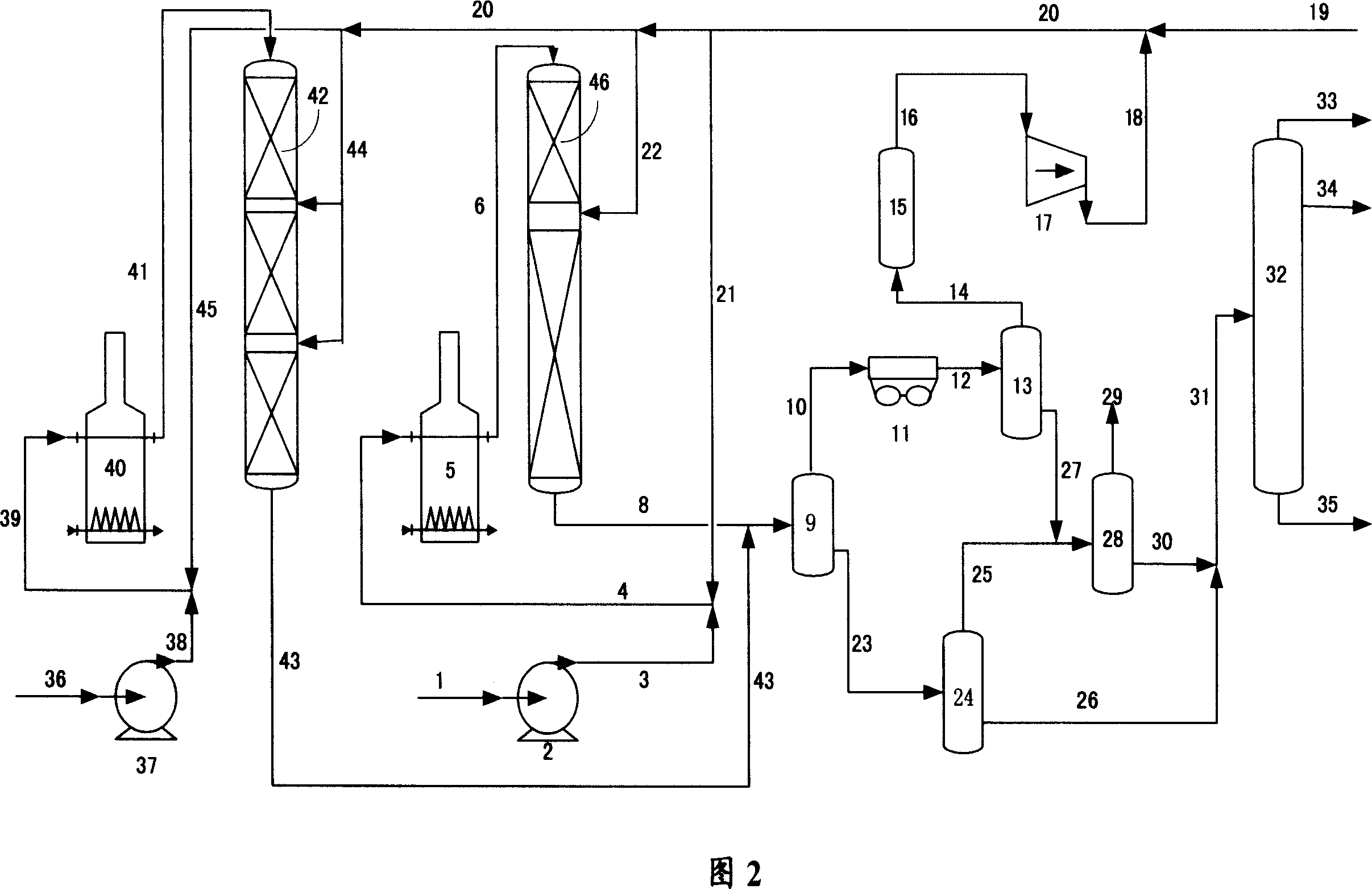Method of dense raw material hydrotreatment-catalytic cracking for improving propylene productivity
A technology for hydrotreating and catalytic cracking, which is applied in hydrotreating process, processing of hydrocarbon oil, petroleum industry, etc., can solve the problems of low propylene yield, etc., and achieve the effect of improving propylene yield
- Summary
- Abstract
- Description
- Claims
- Application Information
AI Technical Summary
Problems solved by technology
Method used
Image
Examples
Embodiment 1
[0041] This embodiment adopts the technical solution 1 provided by the present invention, and the raw material oil A (heavy distillate oil) used is a vacuum gas oil, and its main properties are shown in Table 1.
[0042] Under the action of hydrogen, the raw material oil A is contacted with the hydrogenation protection agent and the hydrogenation catalyst to react successively. Based on the overall catalyst volume, the filling ratios are respectively 9% and 91%, and the reaction effluent is cooled and separated. After fractionation and fractionation, gas, light liquid phase fraction and heavy liquid phase fraction are obtained, hydrogenation reaction conditions and heavy liquid phase fraction properties are as shown in table 2, as can be seen from table 2, the heavy liquid phase fraction The 10% distillation temperature is 367°C, and the product yield at 350°C+ is as high as 87% by weight, the sulfur content is only 204ppm, the nitrogen content is only 10ppm, and the hydrogen c...
Embodiment 2
[0044] This embodiment adopts the technical scheme 1 provided by the present invention, the heavy distillate oil used is the raw material oil A, and the cycle oil 1 from the catalytic cracking unit is a mixture of light cycle oil and heavy cycle oil, and its main properties are shown in Table 1.
[0045] The mixed oil of feedstock oil A and cycle oil 1 (mixed mass ratio is 100:5) is reacted with hydrogenation protecting agent, hydrotreating catalyst and hydrotreating catalyst successively under the action of hydrogen, and the overall catalyst volume is Standard, its filling proportion is 12%, 70% and 18% respectively, and its reaction effluent is obtained gas, light liquid phase fraction and heavy liquid phase fraction after cooling, separation and fractionation. The hydrogenation reaction conditions and the properties of the heavy liquid phase fraction are shown in Table 2. As can be seen from Table 2, the 10% distillation temperature of the heavy liquid phase fraction is 351 ...
Embodiment 3
[0047] The heavy liquid fraction obtained in Example 1 was used as the raw material of the catalytic cracking unit, and reacted in a laboratory small-scale fixed fluidized bed reactor, and then the product was separated. The operating conditions and product distribution of catalytic cracking are shown in Table 3.
[0048] It can be seen from Table 3 that the yields of propylene, ethylene and butene are as high as 28.96 wt%, 11.06 wt% and 13.95 wt%, respectively.
PUM
 Login to View More
Login to View More Abstract
Description
Claims
Application Information
 Login to View More
Login to View More - R&D
- Intellectual Property
- Life Sciences
- Materials
- Tech Scout
- Unparalleled Data Quality
- Higher Quality Content
- 60% Fewer Hallucinations
Browse by: Latest US Patents, China's latest patents, Technical Efficacy Thesaurus, Application Domain, Technology Topic, Popular Technical Reports.
© 2025 PatSnap. All rights reserved.Legal|Privacy policy|Modern Slavery Act Transparency Statement|Sitemap|About US| Contact US: help@patsnap.com


